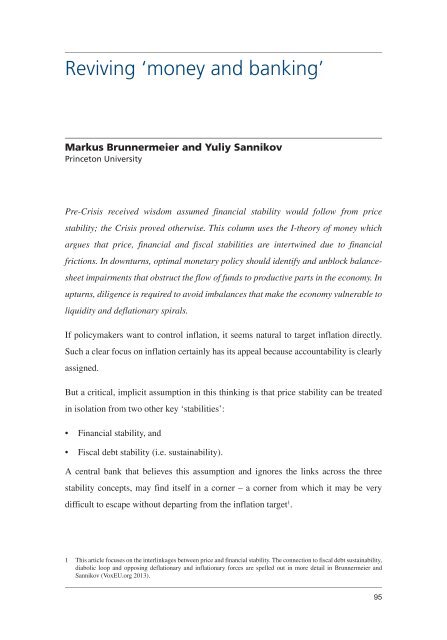You also want an ePaper? Increase the reach of your titles
YUMPU automatically turns print PDFs into web optimized ePapers that Google loves.
Reviving ‘money and banking’Markus Brunnermeier and Yuliy SannikovPrinceton UniversityPre-Crisis received wisdom assumed financial stability would follow from pricestability; the Crisis proved otherwise. This column uses the I-theory of money whichargues that price, financial and fiscal stabilities are intertwined due to financialfrictions. In downturns, optimal monetary policy should identify and unblock balancesheetimpairments that obstruct the flow of funds to productive parts in the economy. Inupturns, diligence is required to avoid imbalances that make the economy vulnerable toliquidity and deflationary spirals.If policymakers want to control <strong>inflation</strong>, it seems natural to target <strong>inflation</strong> directly.Such a clear focus on <strong>inflation</strong> certainly has its appeal because accountability is clearlyassigned.But a critical, implicit assumption in this thinking is that price stability can be treatedin isolation from two other key ‘stabilities’:• Financial stability, and• Fiscal debt stability (i.e. sustainability).A central bank that believes this assumption and ignores the links across the threestability concepts, may find itself in a corner – a corner from which it may be verydifficult to escape without departing from the <strong>inflation</strong> target 1 .1 This article focuses on the interlinkages between price and financial stability. The connection to fiscal debt sustainability,diabolic loop and opposing deflationary and <strong>inflation</strong>ary forces are spelled out in more detail in Brunnermeier andSannikov (VoxEU.org 2013).95



